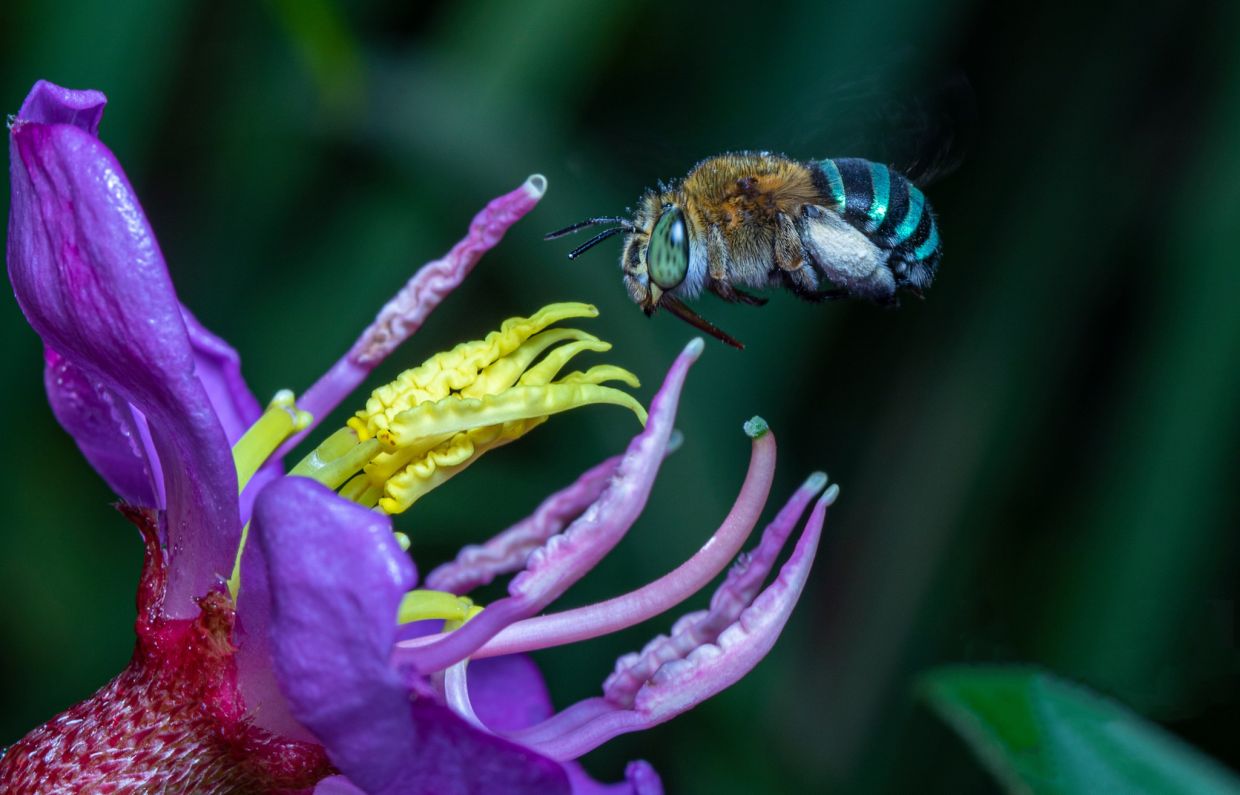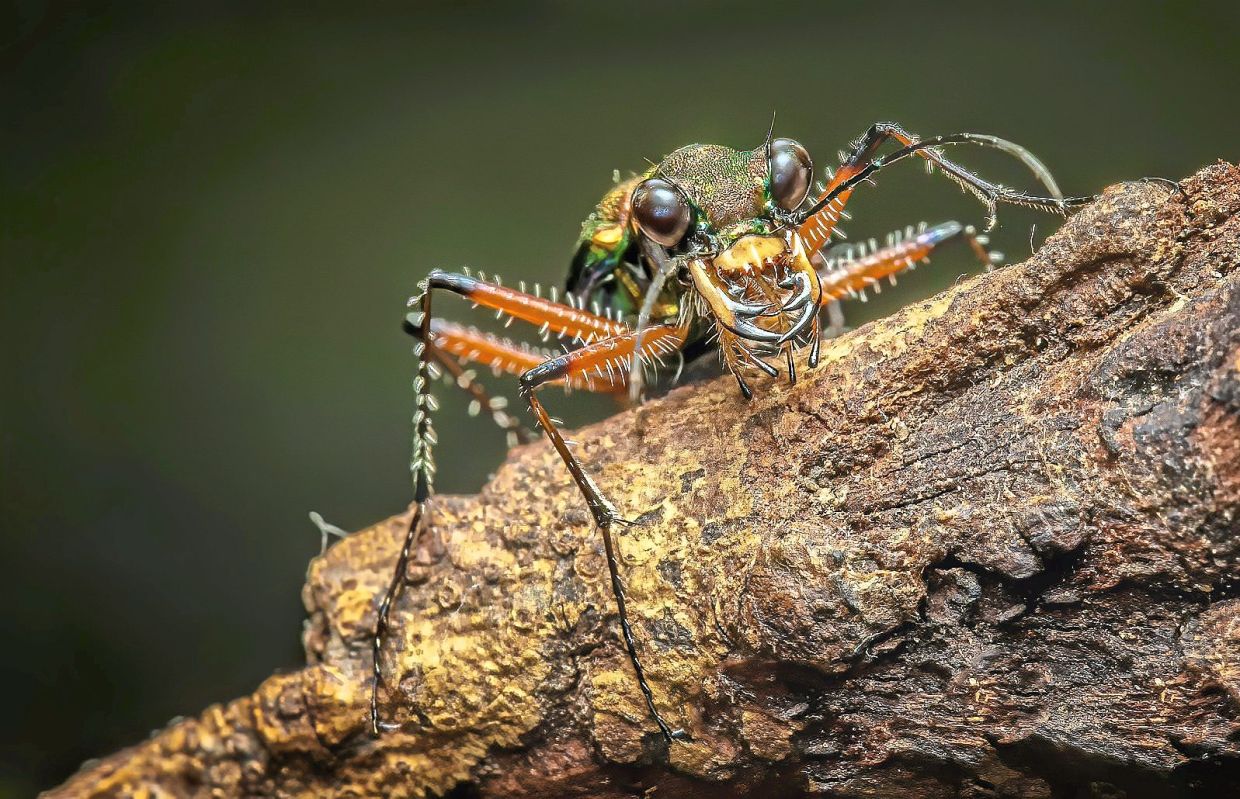Bee is one of the interesting species to capture in insect macro photography, especially when in flight.
MACRO photography is a captivating genre that immerses photographers in the intricate details of the miniature world.
It offers a unique opportunity to capture subjects up close, unveiling stunning details that often go unnoticed by the naked eye.
Macro photography can be pursued as an outdoor activity easily accessible to anyone with a camera and a macro lens.
It is essential to develop a basic understanding of this genre to excel at capturing the beauty of the macro world before embarking on this hobby.
The primary focus of macro photography is to capture subjects at a 1:1 ratio or greater, where the subject on the camera’s sensor appears the same size or larger than its actual size.
This distinctive perspective allows photographers to reveal the hidden beauty and intricate features of small subjects such as insects, flowers, textures, and everyday objects.
It is recommended to have a digital single-lens reflex (DSLR) or mirrorless camera equipped with interchangeable lens systems and manual control options to engage in macro photography.
However, compact cameras and smartphones with macro capabilities can also yield impressive results.
Investing in a dedicated macro lens is paramount for macro photography.
These specialised lenses offer a close focusing distance, enabling one to capture life-size or greater magnification of your subjects.
Macro lenses typically range in focal length from 50mm to 200mm, providing versatility in composition.
Alternatively, extension tubes can be used as a cost-effective option to extend the focus range of existing lenses.
These hollow tubes, attached between the camera body and lens, increase the distance between the lens and the sensor, allowing for closer focusing.
For those starting without a macro lens, close-up or macro span-on lenses can be used as add-on accessories, acting like reading glasses to bring you closer to your subjects for photography.
Proper lighting is crucial in macro photography to illuminate the subject effectively and capture beautiful images.
External flash units, ring flashes, or LED panels can be employed to control lighting and reduce harsh shadows. Diffusers or reflectors can also soften the light, resulting in more pleasing outcomes.
Macro photography often exhibits a shallow depth of field due to its proximity to the subject.
Experimenting with different angles and perspectives lets you showcase the subject’s unique features and intricate patterns in macro photography.
Macro photographers often employ focus stacking to ensure sharp focus across the subject.
This method involves capturing multiple images at different focus distances and merging them using specialised software.
By combining the images, you can achieve an extended depth of field, resulting in a final image where all subject parts are in sharp focus.
Macro photography also demands patience and keen observation skills.
Studying the subject, exploring different angles, and waiting for the perfect moment to capture the shot can result in compelling images.
In addition, understanding the behaviour and natural habitat of the subject can enhance your chances of capturing extraordinary moments.
There are specific guidelines to consider for camera settings for macro photography, which can vary depending on specific conditions and desired outcomes.
First and foremost, selecting the appropriate aperture (f-stop) plays a crucial role in macro photography.
Opting for a narrow aperture (a higher f-stop number, such as f/11 or higher), increases the depth of field, ensuring a larger portion of the subject is in sharp focus.
Due to the close-up nature of macro photography, even the slightest movement can result in blurriness.
To counter this, a faster shutter speed is essential to “freeze” the subject and minimise motion blur.
Generally, a minimum shutter speed of 1/125th to 1/200th of a second is recommended, although faster speeds may be necessary depending on the subject’s activity level.
Maintaining an ISO of 200 is a good starting point to preserve image quality and minimise noise. However, higher ISO values may be required to capture sufficient light in low-light conditions.
Precise focusing is critical in macro photography. While autofocus can be used, manual focus often provides better control in many cases.
Shooting in RAW format is highly recommended over JPEG. RAW preserves more details and offers greater flexibility during post-processing, as it captures the maximum amount of data.This format enables exposure, white balance, and colour adjustments during post-processing, providing more control over the final image.
Remember that these settings serve as a starting point, and adjustments may be necessary based on specific conditions and your creative vision for your macro shots.To achieve the desired results, you can fine-tune these settings through experimentation and practise.
Happy shooting!













